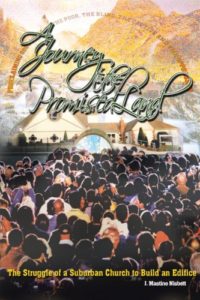A Journey to the Promised Land: The Struggle of a Suburban Church to Build an Edifice
by
Dean Nisbett has crafted an excellent book that is carefully researched. He is a masterful storyteller, combining theology, sociology, history, scripture and church architecture into a masterpiece. Writing about the struggle of a suburban parish to build an edifice, the author cites numerous parallels between the Israelites’ history and that of the parish. He recasts the Israelites’ story into the contemporary, making the Bible relevant in demonstrating the ongoing work of God.
Nisbett explores the struggle of African Americans to be integrated into the United States of America. He addresses the tension between West Indians and black Americans and notes the latter’s significant contribution to the Episcopal Church. He recognizes the indelible contribution of the first African Americans who penetrated the white enclave of Cambria Heights. Recognition is also made of black Episcopalians for their valuable contribution to the society and for challenging the church to be honest to its Catholicity, insisting that they (black Episcopalians) be included into the “Body of Christ.”The author explicates the concept of vocation, the “call” to serve God in His church. He shares his personal experience. Very inspiring! A must read for those contemplating the ordained ministry.
The book integrates the Church into the life of the community. It is an excellent tool for congregational development, and could serve as a model for congregations to chronicle their history from a theological perspective. In addition, the book will be useful to those researching the history of the ordination of black Episcopalians and the birth of the black Episcopal congregation in the United States. It is a wonderful resource for those considering church construction. Finally, the author theologizes the building and provides a helpful manual for every worshiper whom the author (in reference to 1st Peter) describes as “living stones” built upon the foundation of Jesus Christ, “The chief Corner Stone.”




